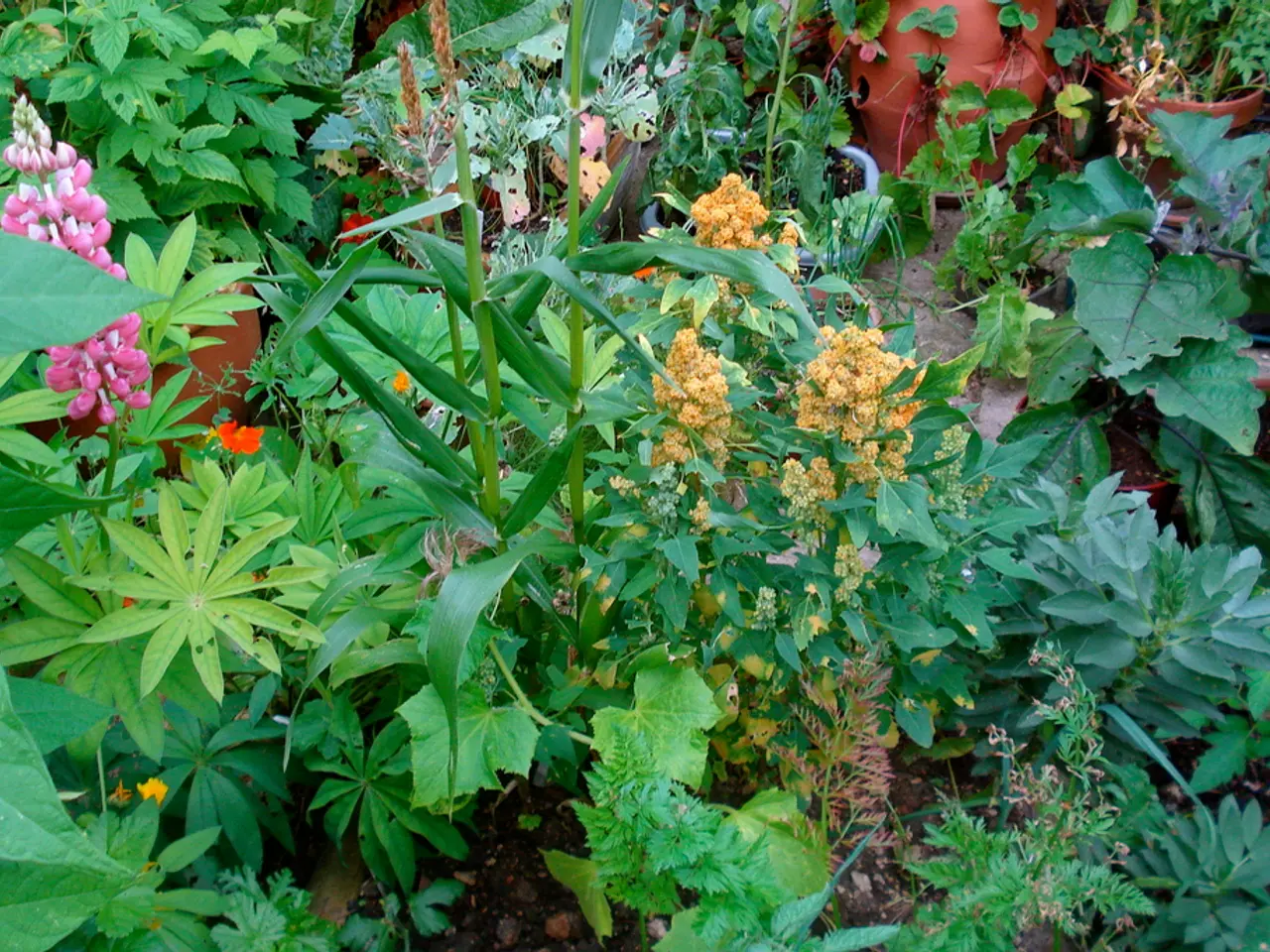Steps for Nurturing Curry Plants at Home
Growing and Caring for the Curry Plant: A Guide
The curry plant, scientifically known as Helichrysum italicum, is a popular ornamental plant known for its aromatic silver-gray foliage and bright yellow summer flowers. This low-maintenance plant thrives best in sunny, warm environments and is suitable for Mediterranean-style gardens.
Choosing Your Curry Plant
You can find the curry plant in the herb section of nurseries and garden centres, as well as under ornamental plants. Remember, the curry plant is not related to the plant used for curry leaves in Indian dishes.
Planting and Growing
Always check plants for signs of damage or disease before planting. Seeds of the curry plant are sown in spring indoors on the surface of moist, peat-free seed compost. It's easier to grow the curry plant from young plants, but it's also available to grow from seed.
The curry plant grows to around 45-60cm high and wide, making it suitable for border edges, raised beds, and informal small hedges. Space plants approximately 60cm apart to allow for spreading growth.
Caring for Your Curry Plant
Sunlight: The curry plant needs a lot of direct sun exposure for healthy growth.
Soil: Well-drained soil is essential to prevent root rot; the plant prefers sandy or rocky soils typical of its Mediterranean origins.
Watering: Water sparingly. Overwatering can harm the plant; allow the soil to dry out between watering sessions. Light watering suffices.
Fertilizing: Use a diluted organic feed such as soured buttermilk every two weeks to promote healthier growth.
Temperature and Hardiness: Hardy in zones 7a to 11, it tolerates heat well and prefers temperatures above 40°F (4.4°C).
Pruning: Prune occasionally to maintain shape and encourage bushiness. After flowering, cut back the whole curry plant by around a third, to deadhead and remove the shoot tops at the same time.
Harvesting
Harvest by cutting the top sections of young, non-flowering shoots and stripping the leaves from the stems before chopping. The leaves make good additions to salads, soups, and stews, while both leafy stems and flowers of the curry plant dry well.
Pest and Disease Resistance
The curry plant has good natural resistance to pests and diseases, making it a hardy and resilient plant for your garden.
Growing Indoors
The curry plant is well-suited for mixed containers and indoor growing under adequate sunlight. Remember, it needs a lot of direct sun exposure for healthy growth.
Dwarf Form
For those with limited space, 'Helichrysum italicum' 'Dartington' is a dwarf and more compact form of the species, with a height and spread of 50cm x 60cm, making it an ideal choice for indoor growing or smaller gardens.
Hardiness
The curry plant is hardy in UK gardens down to around -10֯C, ensuring it can withstand colder temperatures during winter months.
In summary, the curry plant thrives best in full sun and well-drained soil. Water moderately but allow drying between waterings. Fertilize biweekly with diluted organic feed like soured buttermilk. Provide spacing around 18–26 inches. The curry plant is hardy in warmer zones, tolerates heat and drought well. With its strong, curry-like scent, aromatic silver-gray foliage, and bright yellow summer flowers, the curry plant is a delightful addition to any garden or container.
Read also:
- Wawa avian tests positive for West Nile disease
- The market for Kraft Lignin is projected to increase at a rate of 7.2% each year until 2034.
- Revising hair care practices with cynorrhodon extracts for addressing hair fragility
- Filipino Card Games Find Their Home at Gamezone, Offering an Unmatched Experience!





